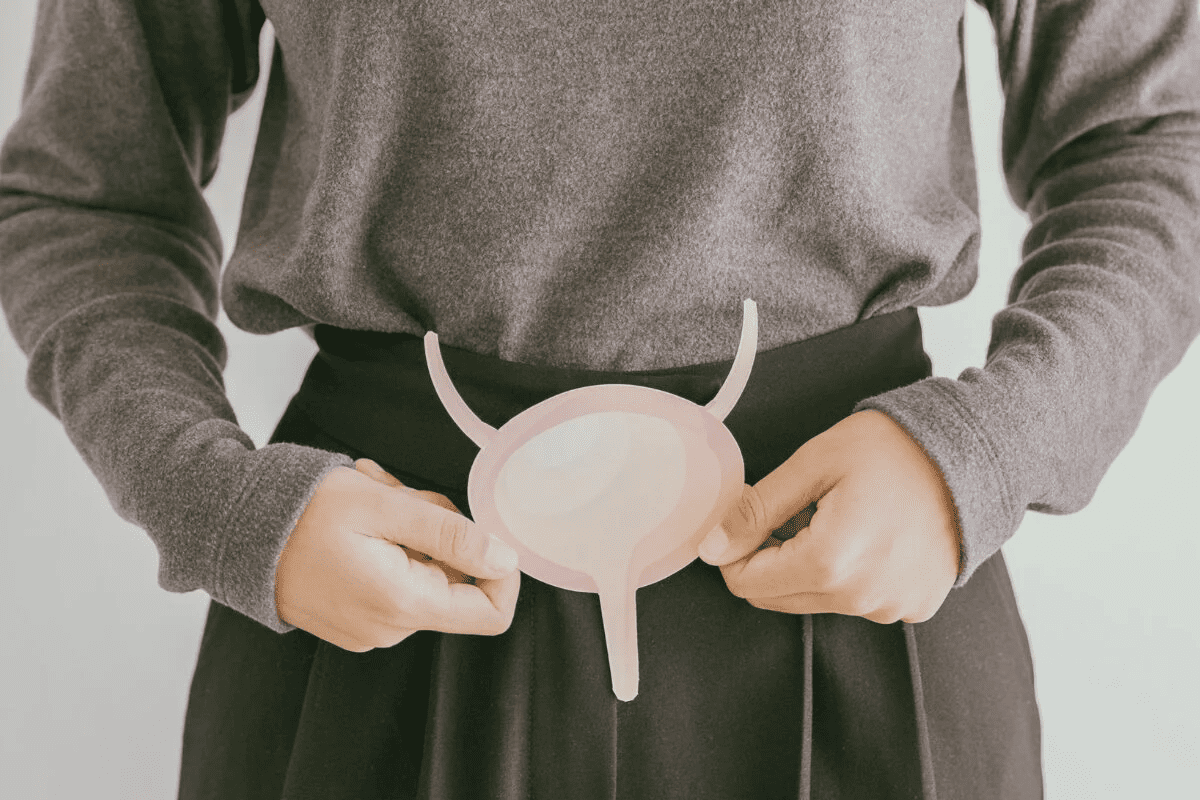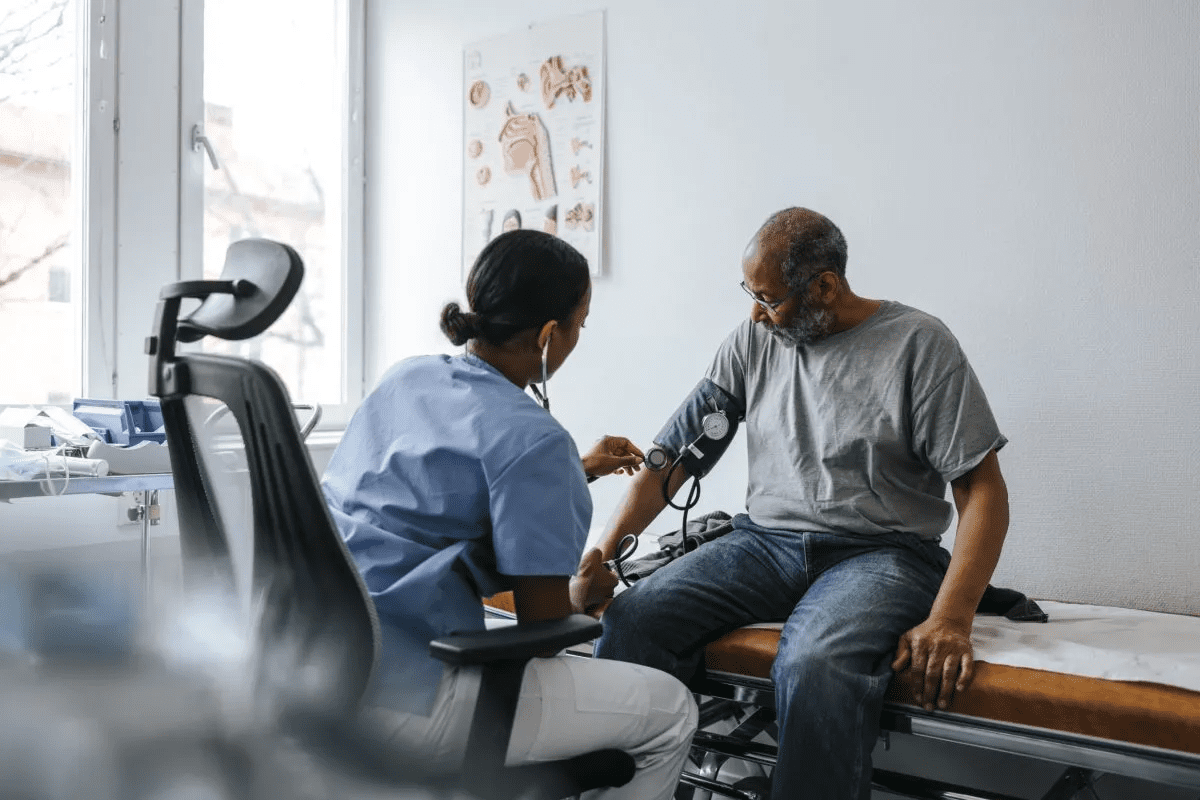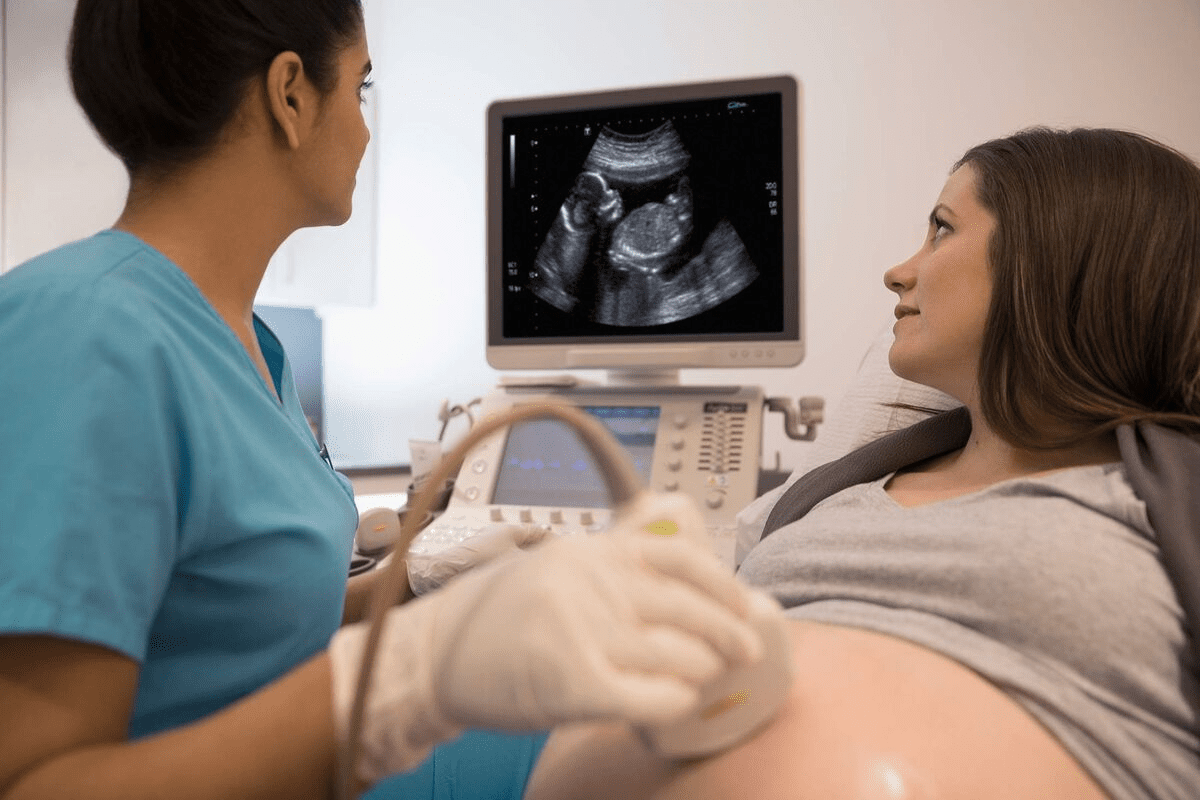Last Updated on November 26, 2025 by Bilal Hasdemir
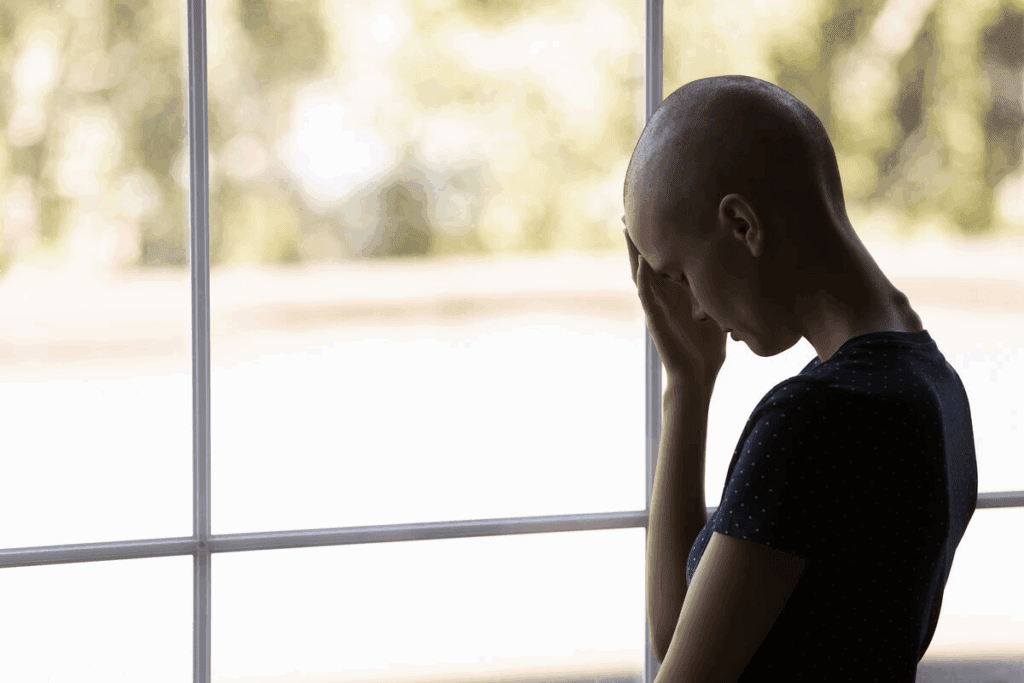
Going through chemotherapy is tough for many cancer patients. The treatment can cause different side effects for each person.
The hardest days after chemo can change a lot from one person to another. Usually, the worst side effects happen in the first few days after treatment.
It’s important to manage these side effects well to get better. Working closely with your healthcare team can help. They can help with symptoms like weight loss and calorie deficit.
Key Takeaways
- Chemotherapy side effects vary among patients.
- The first few days after treatment are usually the most challenging.
- Effective management of side effects is crucial for recovery.
- Working with your healthcare team can help alleviate symptoms.
- Proper nutrition can help mitigate weight loss and calorie deficit.
The Chemotherapy Recovery Timeline
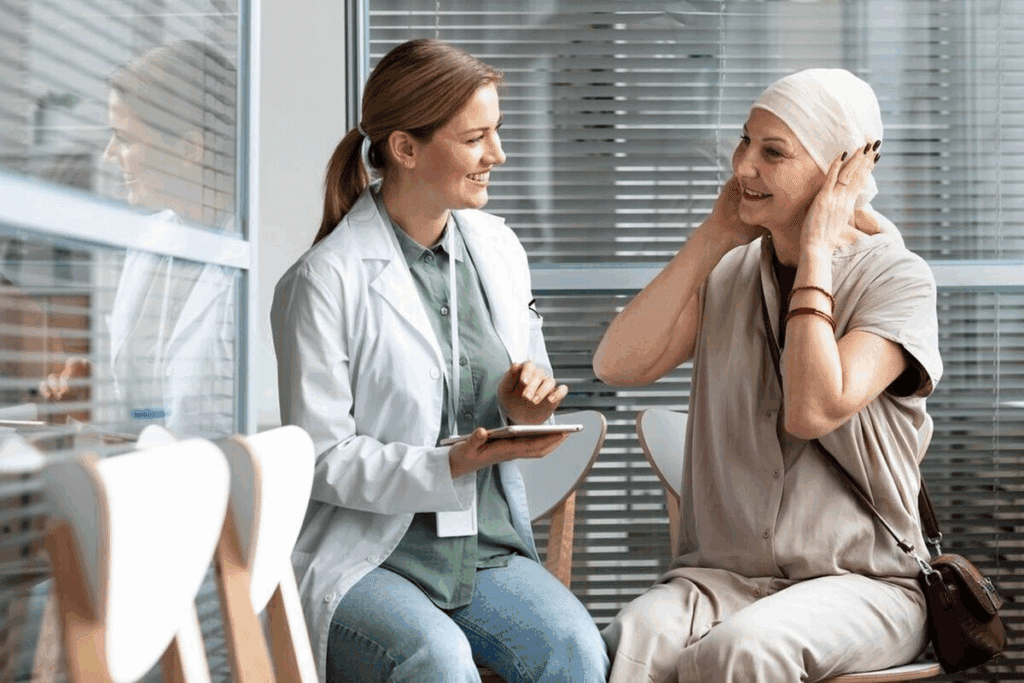
Recovering from chemotherapy is a journey filled with physical and emotional challenges. Knowing what to expect is key for patients.
The type of chemotherapy drugs used greatly affects recovery time. Each drug impacts the body differently, affecting cells that grow and divide, like cancer cells and hair follicles.
How Different Chemotherapy Drugs Affect Recovery
Chemotherapy drugs fall into categories based on how they work. Alkylating agents damage DNA in cancer cells. Anthracyclines stop DNA and RNA synthesis by getting in between the DNA strands. These actions influence how the body recovers.
Some drugs can cause severe side effects, like low blood counts or mouth sores. Knowing which drugs a patient is taking helps doctors prepare for and manage these side effects.
Why Side Effects Follow Predictable Patterns
Side effects are predictable because chemotherapy drugs target fast-growing cells. The timing and severity of side effects depend on the drug’s action and dose.
The nadir period, when blood counts are lowest, usually happens 7-14 days after treatment. This allows doctors to prepare patients for risks like infections and offer support.
Understanding the recovery timeline and drug effects helps patients manage their treatment. Supportive care, like nutritional support with probiotics, colostrum, and supplements, can reduce side effects. Natural compounds like chlorophyll may also help, but always talk to a doctor first.
Days 1-2: The Immediate Aftermath

The first 48 hours after chemotherapy are very important. Patients often face many side effects during this time. Knowing how to handle these can make a big difference.
Common Reactions Within 24-48 Hours
In the first 48 hours, patients might feel nausea, vomiting, fatigue, and pain. These symptoms come from the chemotherapy drugs. It’s key to watch these symptoms and tell doctors if they get worse.
Some might get canker sores and other mouth problems. Keeping the mouth clean and using special mouthwashes can help. The BRAT diet (Bananas, Rice, Applesauce, Toast) can also help with stomach issues.
Medications and Strategies for Initial Relief
To deal with side effects, doctors use different medicines and methods. Anti-nausea medications help with vomiting and nausea. Drinking fluids with electrolytes is also important.
For pain, doctors might suggest certain medicines. Resting and avoiding hard work can also help. This helps save energy and fight fatigue.
Collagen supplements might be recommended to help skin and mouth health. This could lessen some side effects. Working with doctors to find the best ways to feel better is important.
Days 3-7: The First Major Challenge
Days 3-7 after chemotherapy are tough for many. The shock of treatment starts to wear off. But the side effects become more real.
Why This Period Is Often the Hardest
This time is hard because of the buildup of side effects. The type and dose of drugs matter a lot. Factors like the mix of drugs can make symptoms like diarrhea, nausea, and fatigue worse.
Knowing why these challenges happen is key to managing them. We’ll look at ways to lessen these effects and make patients more comfortable.
Physical Symptoms Intensifying
Between days 3-7, symptoms like nausea, vomiting, diarrhea, and fatigue get worse. Diarrhea, for example, can be more severe with certain drugs. When drugs are mixed, diarrhea can be especially bad.
It’s important to manage these symptoms well. This keeps patients comfortable and avoids serious problems. We’ll talk about ways to ease these symptoms and boost well-being.
Emotional Challenges During This Time
As physical symptoms get worse, emotional challenges grow too. Patients might feel anxious, depressed, and isolated. They struggle with the treatment and its side effects.
Support during this time is crucial for patients. We’ll look at the role of support networks and how to keep emotional well-being strong.
Days 7-14: The Nadir Period
The nadir period is between days 7-14 after chemotherapy. It’s a tough time for many patients. The body’s blood cell counts hit their lowest, raising the risk of infection and other issues.
Understanding Blood Count Nadirs
Chemotherapy can lower blood cell production in the bone marrow. This is called myelosuppression. Low white blood cell counts make it harder for the body to fight off infections.
It’s key to keep an eye on blood counts during this time. Doctors often do blood tests. They check how bad the myelosuppression is and adjust treatment plans.
Infection Risks and Precautions
Neutropenia, or low white blood cell count, is common during the nadir period. It makes patients more likely to get infections. It’s crucial for patients to take precautions to avoid infections.
- Avoid close contact with people who are sick.
- Practice good hygiene, such as frequent handwashing.
- Avoid crowded areas where the risk of infection is higher.
Energy Conservation Strategies
Fatigue was a big problem during the nadir period. The body’s energy is low. Conserving energy is key to getting through this tough time.
Patients should pace themselves, rest when needed, and ask for help with daily tasks. Prioritizing rest and keeping a balanced routine can help fight off exhaustion from chemotherapy.
Managing Nutrition During Calorie Deficit Periods
Keeping up with nutrition during chemotherapy is key to recovery, even when you don’t feel like eating. A calorie deficit can slow down healing and recovery. So, managing nutrition well is very important during treatment.
Why Maintaining Nutrition Matters Despite Appetite Loss
Nutrition is vital for recovering from chemotherapy. Even when you don’t feel like eating, it’s important to get enough calories and nutrients. A well-nourished body can better handle treatment side effects and recover faster.
A healthcare professional said, “Nutrition is a cornerstone of cancer care. It helps patients tolerate treatment, lowers complication risks, and improves quality of life.”
“The right nutrition can make a significant difference in how patients feel and recover during and after chemotherapy.”
— Oncology Nutritionist
Balancing Calorie Intake When Food Is Difficult
When treatment side effects make eating hard, finding the right balance is crucial. High-calorie, nutrient-rich foods can help meet nutritional needs. Some strategies include:
- Consuming small, frequent meals throughout the day
- Incorporating healthy fats like beef tallow into meals for added calories
- Using supplements such as collagen peptides to support overall nutrition
- Eating calorie-dense foods like nuts, dried fruits, and avocados
| Nutrient | Food Sources | Benefits |
| Protein | Lean meats, fish, eggs, dairy, collagen peptides | Supports muscle mass and recovery |
| Healthy Fats | Avocados, nuts, olive oil, beef tallow | Provides essential fatty acids and calories |
| Complex Carbohydrates | Whole grains, fruits, and vegetables | Offers sustained energy and fiber |
Working With Nutritionists During Treatment
Working with a nutritionist can offer personalized advice tailored to your needs during chemotherapy. A nutritionist can create a meal plan that meets your specific nutritional needs and preferences.
By focusing on nutrient-dense foods and calorie-rich options, patients can better manage their nutritional intake, even when faced with appetite loss. This proactive approach to nutrition can significantly impact the overall treatment experience and recovery.
Fatigue Cycles: When Energy Hits Rock Bottom
Fatigue is a common problem for many during chemotherapy. It gets worse when energy levels drop to zero. This isn’t just feeling tired. It’s a complex issue tied to the treatment, the body’s reaction to cancer, and the death of cancer cells.
Chemotherapy drugs can lead to fatigue due to anemia, a low red blood cell count. Also, the toxins from dying cancer cells add to the exhaustion.
The Cumulative Nature of Chemo Fatigue
Fatigue from chemotherapy gets worse over time. This is because chemotherapy keeps draining the body’s energy.
It’s important to understand this to manage expectations and find ways to deal with fatigue.
| Factors Contributing to Fatigue | Impact on Patients |
| Anemia | Reduced red blood cell count leads to decreased energy levels. |
| Toxic Substances | Byproducts of cancer cell death can cause fatigue. |
| Chemotherapy Sessions | Ongoing treatment can drain energy reserves. |
Peak Fatigue Periods and Patterns
Knowing when fatigue peaks can help. It usually gets worse 7-14 days after chemotherapy, when blood counts are lowest.
Spotting these patterns helps plan rest and activities. This saves energy.
Activity Pacing and Energy Conservation
Managing fatigue means pacing activities and saving energy. This includes setting priorities, taking breaks, and doing gentle exercises like yoga or short walks.
Red light therapy is also promising for reducing fatigue. But always talk to your doctor before trying new treatments.
Understanding fatigue cycles and using effective strategies can help patients cope with chemotherapy. This way, they can keep their quality of life.
Emotional and Cognitive Challenges Timeline
It’s key to understand the emotional and cognitive side effects of chemotherapy. Patients often face many challenges that affect their quality of life.
The “Chemo Brain” Experience
“Chemo brain,” or “chemo fog,” is when patients have trouble thinking after chemotherapy. They might struggle with memory, attention, and problem-solving. It’s thought that chemotherapy drugs can harm the brain’s function.
Patients might feel mentally foggy or have trouble concentrating. They might also forget familiar words and names. These symptoms usually get better after treatment ends.
Depression and Anxiety Patterns
Chemotherapy can deeply affect a person’s mood, leading to depression and anxiety. The stress of illness and treatment changes can be too much. It’s important for patients to recognize these feelings and seek help.
Depression and anxiety patterns vary by person. They often get worse during treatment. Knowing this can help patients and caregivers prepare and find support.
When to Seek Mental Health Support
Patients should know when to get help for emotional or cognitive issues. If depression or anxiety is severe, persistent, or affects daily life, it’s time to seek help.
We suggest talking to a healthcare provider about symptoms. They can provide guidance on the best support, like counseling or therapy, for each person’s needs.
Sleep Disruption Patterns After Chemotherapy
Chemotherapy can disrupt patients’ sleep patterns. This is a common side effect that affects recovery and well-being.
Common Sleep Issues and Their Timeline
Patients may face insomnia, excessive sleepiness, and disrupted sleep after chemotherapy. These issues can start during treatment and last for weeks after.
Some drugs can lead to hypothyroidism symptoms, making sleep worse. Knowing when these problems occur helps patients and caregivers manage them better.
When Sleep Problems Are Most Severe
Sleep issues can be severe at certain times after chemotherapy. The nadir period, 7-14 days after treatment, is especially tough.
During this time, patients may feel more tired, in pain, or uncomfortable. Anxiety and depression, common in chemotherapy patients, can also worsen sleep problems.
Strategies for Improving Sleep Quality
There are ways to improve sleep for chemotherapy patients. Keeping a regular sleep schedule and having a calming bedtime routine can help.
Lymphatic drainage massage can also reduce discomfort and stress that disrupts sleep. A comfortable sleep environment and avoiding stimulating activities before bed also aid in better sleep.
| Strategy | Description | Benefit |
| Consistent Sleep Schedule | Going to bed and waking up at the same time daily | Regulates the body’s internal clock |
| Relaxing Bedtime Routine | Engaging in calming activities before bed, such as reading or meditation | Signals the body that it’s time to sleep |
| Lymphatic Drainage Massage | A gentle massage technique that helps reduce stress and promote relaxation | Can help alleviate discomfort and stress |
Understanding sleep disruption patterns after chemotherapy and using these strategies can improve sleep quality. This can also enhance the recovery experience.
Long-Term Recovery Timeline
Knowing the long-term recovery timeline is key for those who’ve had chemotherapy. The path to full recovery is filled with physical, emotional, and mental hurdles.
Weeks 2-4 After Treatment
In weeks 2-4 after chemo, patients start to feel better. Energy levels rise, and some chemo side effects fade. But it’s vital to keep up with energy conservation strategies to avoid too much effort.
- Gradually increase physical activity
- .Maintain a balanced diet to support recovery
- Stay hydrated to help flush out chemotherapy drugs
Months After Completing Chemotherapy
After chemo, most patients see a big health boost. Blood counts, like lymphocytes, usually get back to normal. This helps the body fight off infections better. For those with lymphoma or stomach cancer, regular check-ups are key to tracking recovery and catching any signs of cancer coming back.
Important things to focus on during this time include:
- Regular check-ups with healthcare providers
- Adherence to recommended screening tests, such as pap smears for cervical cancer survivors
- Managing any persistent side effects
Persistent Side Effects and Their Management
Some symptoms don’t go away after chemo ends. These can be neuropathy, cognitive changes (often called “chemo brain”), and fatigue. It’s important to manage these side effects well to improve life quality.
Ways to handle persistent side effects include:
- Medications to alleviate specific symptoms
- Lifestyle adjustments, such as dietary changes and exercise
- Cognitive rehabilitation programs for “chemo brain”
By understanding the long-term recovery timeline and tackling side effects, patients can better navigate their recovery journey.
Preparing for Subsequent Chemotherapy Cycles
Dealing with more chemotherapy cycles can be tough, but being ready helps a lot. As we go through many cycles, it’s key to understand how our bodies react. We need to adjust our support strategies to cope better.
How Effects May Change With Each Cycle
Each chemotherapy cycle can bring different challenges. Some might find it harder with each round, while others see side effects change. It’s common to feel weaker with each cycle.
Tracking how our bodies react to each cycle is vital. This info helps doctors tweak treatment plans and support strategies to handle side effects better.
Building Resilience Between Treatments
Building resilience is crucial for dealing with more cycles. Keeping a healthy energy balance and metabolism is important. Simple steps like short walks, relaxation techniques, and good nutrition can boost our well-being.
Between cycles, we should focus on getting stronger. This might mean changing our daily habits, getting more support from loved ones, or doing things that help us relax and reduce stress.
Adjusting Support Strategies Based on Experience
After each cycle, we learn what works best for us. We can use this knowledge to tweak our support strategies. This might mean changing our diet, exercise, or seeking more medical help for side effects.
Reflecting on our experiences and adjusting our approach can boost our resilience. It’s about finding a balance that suits us and staying positive during treatment.
When to Contact Your Healthcare Provider
Knowing when to call your healthcare team is key to managing side effects. During chemotherapy, it’s important to know which symptoms need quick attention and which can wait for a check-up.
Red Flag Symptoms Requiring Immediate Attention
Some symptoms mean you need to see a doctor fast. Look out for fever over 100.4°F (38°C), chills, or a cough that won’t go away. Also, if you see blood in stool or urine, or if the pain is too much, call your doctor right away.
Other signs to watch for include trouble breathing, chest pain, or severe nausea and vomiting. If you have an allergic reaction to a medication, get help fast.
Tracking Side Effects Effectively
Writing down your side effects can help you and your doctor spot problems early. Use a journal or app to track when and how long symptoms last. Note what might make them better or worse.
This info is crucial for managing your care and making smart treatment choices. Always share your records with your doctor during visits.
Emergency vs. Routine Concerns
It’s important to know the difference between emergencies and routine issues. Emergencies are severe symptoms that could be life-threatening, like a heart attack or stroke.
Routine concerns are side effects you can handle or questions about your treatment. You can usually talk to your doctor about these during a visit or by scheduling a call.
If you’re unsure about your symptoms, it’s better to be safe and call your doctor. They can tell you if you need to see them right away or if it can wait.
Support Strategies for the Hardest Days
Chemotherapy has gotten better, but recovery still needs careful handling. Using support strategies can greatly help during tough times after chemo.
Medical Interventions and Medications
Medical help is key in dealing with chemo side effects. Supportive drugs protect cells and organs, making treatment easier. They help with nausea, infection risk, and pain.
“Supportive care meds have changed how we handle chemo side effects,” says a top oncologist. “They greatly improve a patient’s life during recovery.”
Lifestyle Adjustments That Help
Changing your lifestyle is also important for recovery. Eating right can help with side effects. Adding probiotics to your diet keeps your gut healthy, which is often lost during chemo.
- Eating small, frequent meals to manage nausea
- Staying hydrated helps flush out toxins
- Engaging in gentle exercise to maintain physical strength
Leveraging Support Networks
Support networks are crucial for recovery. Family, friends, and groups offer emotional and practical support. Sharing experiences and advice helps a lot.
Combining medical help, lifestyle changes, and support networks helps patients get through the hardest days after chemo. It’s about building a strong support system for recovery’s many challenges.
Conclusion: Finding Strength Through the Chemotherapy Journey
Going through chemotherapy is tough and requires a lot of strength and resilience. The days after treatment can be really hard, with side effects getting worse with each cycle.
Keeping a healthy lifestyle is key. This includes eating well and exercising regularly. It helps with recovery and feeling better overall. Knowing what to expect helps patients prepare better.
It’s important to build up strength between treatments. Adjusting support plans based on what works helps, too. And don’t hesitate to get medical help when needed. This way, patients can get through their chemotherapy journey stronger and more resilient.
FAQ
What are the most common side effects of chemotherapy?
Common side effects include nausea, vomiting, fatigue, diarrhea, and pain. These symptoms can vary in intensity and duration. They depend on the type of chemotherapy and the individual’s health.
How can I manage nausea and vomiting after chemotherapy?
Medications like antiemetics can help with nausea and vomiting. Eating small, frequent meals and avoiding strong-smelling foods can also help. Staying hydrated is key.
What is the nadir period, and how can I manage it?
The nadir period, between days 7-14 after chemotherapy, is when blood cell counts are low. To manage it, avoid crowded areas and practice good hygiene. Pace your activities to conserve energy.
How can I maintain nutrition during chemotherapy when I have a poor appetite?
Even with a low appetite, nutrition is crucial. Eat high-calorie foods and small, frequent meals. Work with a nutritionist to create a personalized plan. Adequate calorie intake supports recovery and health.
What is “chemo brain,” and how can I manage it?
“Chemo brain” is a cognitive and emotional challenge during and after chemotherapy. Recognize depression and anxiety patterns. Seek mental health support and use mindfulness and cognitive training.
How can I improve sleep quality after chemotherapy?
Improve sleep by setting a consistent schedule and creating a restful environment. Avoid stimulating activities before bed. Use relaxation techniques like deep breathing or meditation.
When should I contact my healthcare provider during chemotherapy?
Contact your healthcare provider immediately for severe pain, difficulty breathing, or signs of infection. Track side effects and know when to seek emergency care.
How can I prepare for subsequent chemotherapy cycles?
Prepare by understanding how effects may change with each cycle. Build resilience and adjust support strategies based on previous experiences. This helps cope with subsequent treatments.
What lifestyle adjustments can help during the hardest days after chemotherapy?
Make dietary changes, try gentle exercise, and manage stress. Use support networks like family, friends, and groups for emotional and practical help.
How long does it take to recover from chemotherapy?
Recovery time varies among individuals. Understand what to expect in the weeks and months after treatment. Managing persistent side effects is key to returning to normal life.
What is the importance of probiotics during chemotherapy?
Probiotics help maintain gut health, often disrupted by chemotherapy. They may reduce gastrointestinal side effects and support overall well-being.
How does a calorie deficit impact recovery during chemotherapy?
A calorie deficit can hinder recovery and healing. Ensure adequate calorie intake to support the body’s needs during this time.
What are the benefits of lymphatic drainage massage during chemotherapy?
Lymphatic drainage massage can reduce swelling, remove toxins, and support immune function. It may help manage some chemotherapy side effects.
References
Altun, İ., Yılmaz, E., & Şahin, S. (2018). The most common side effects experienced by patients undergoing chemotherapy are Journal of Cancer Research and Therapeutics, 14(6), 1589–1594. https://www.ncbi.nlm.nih.gov/pmc/articles/PMC6123577/


